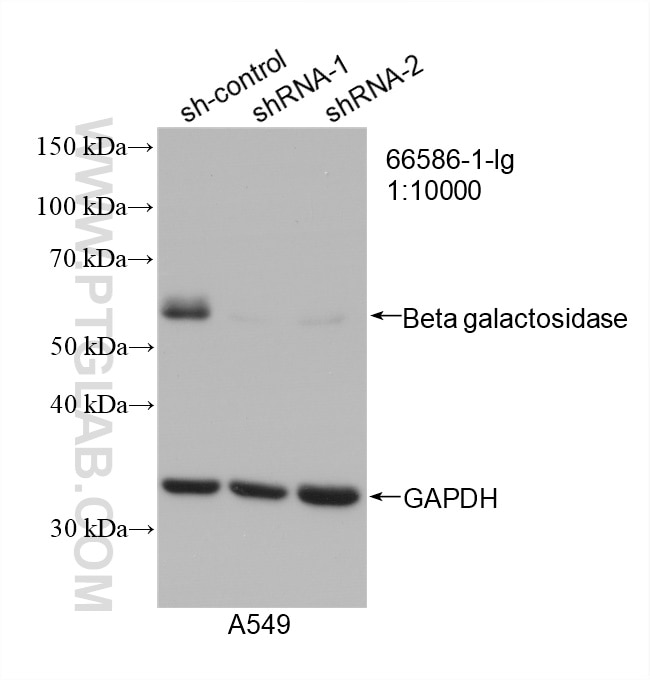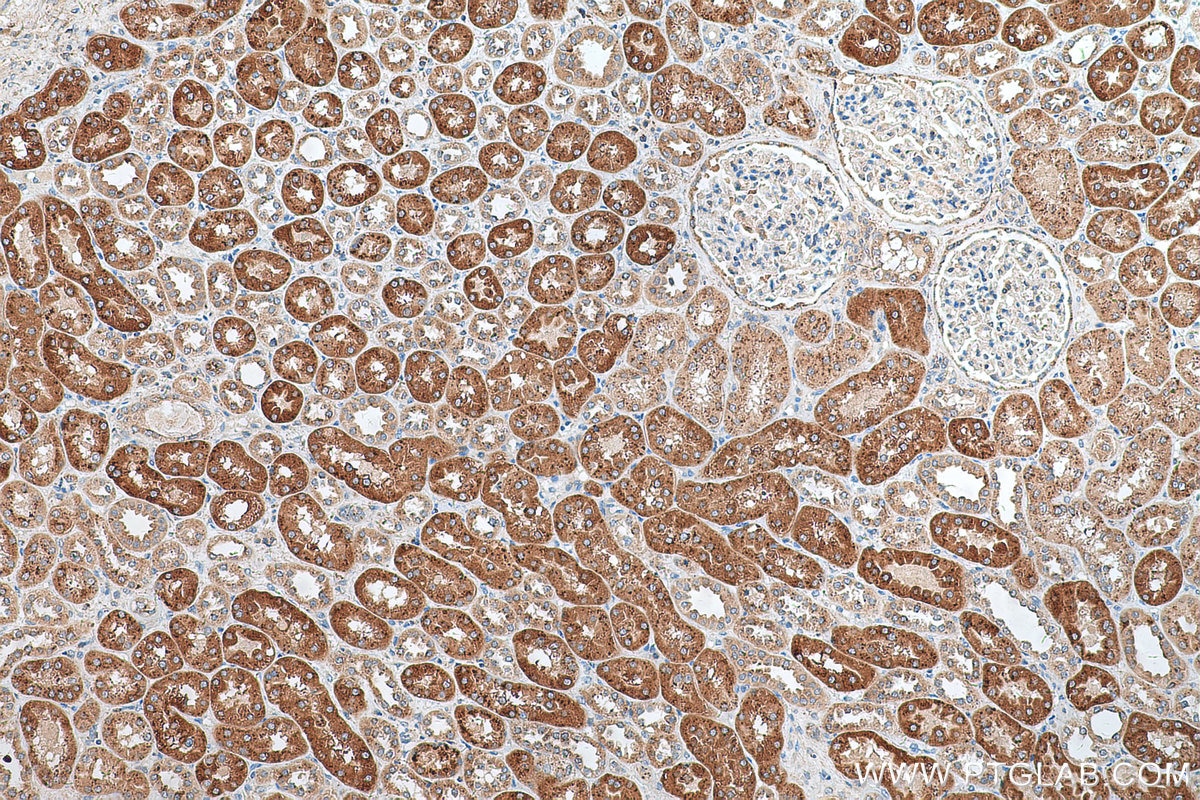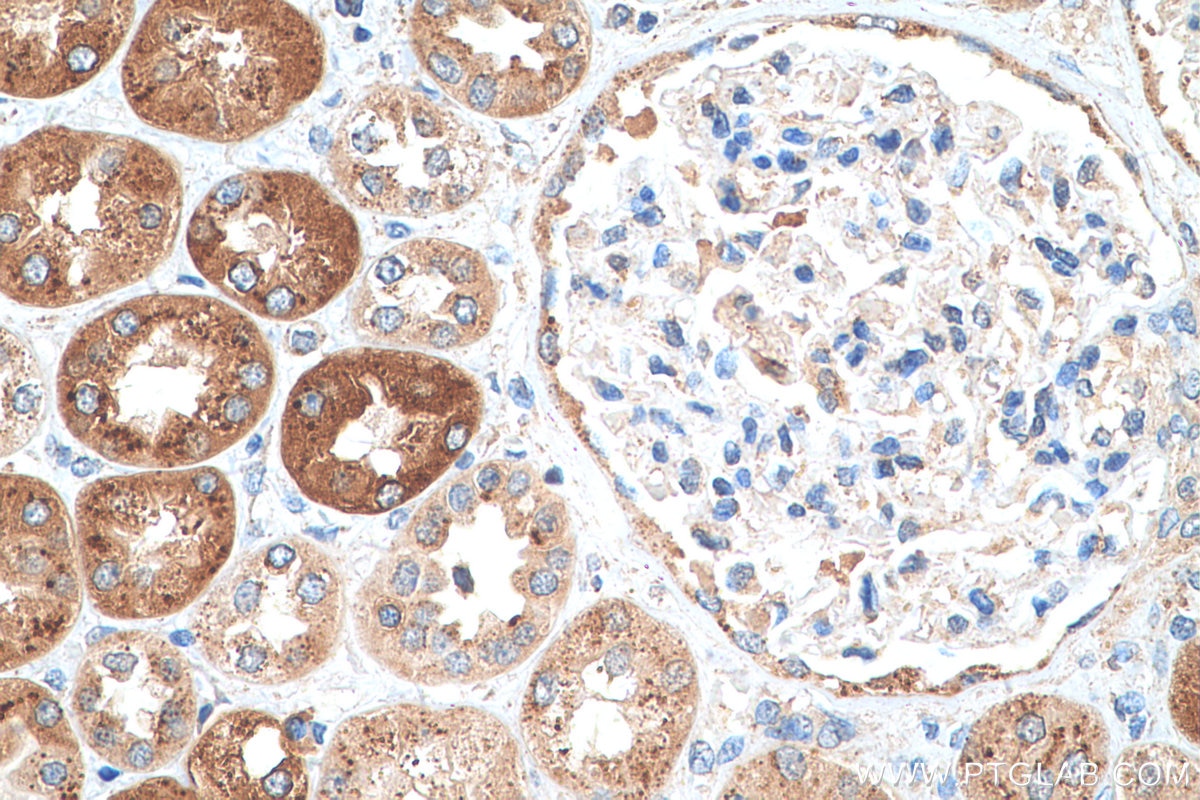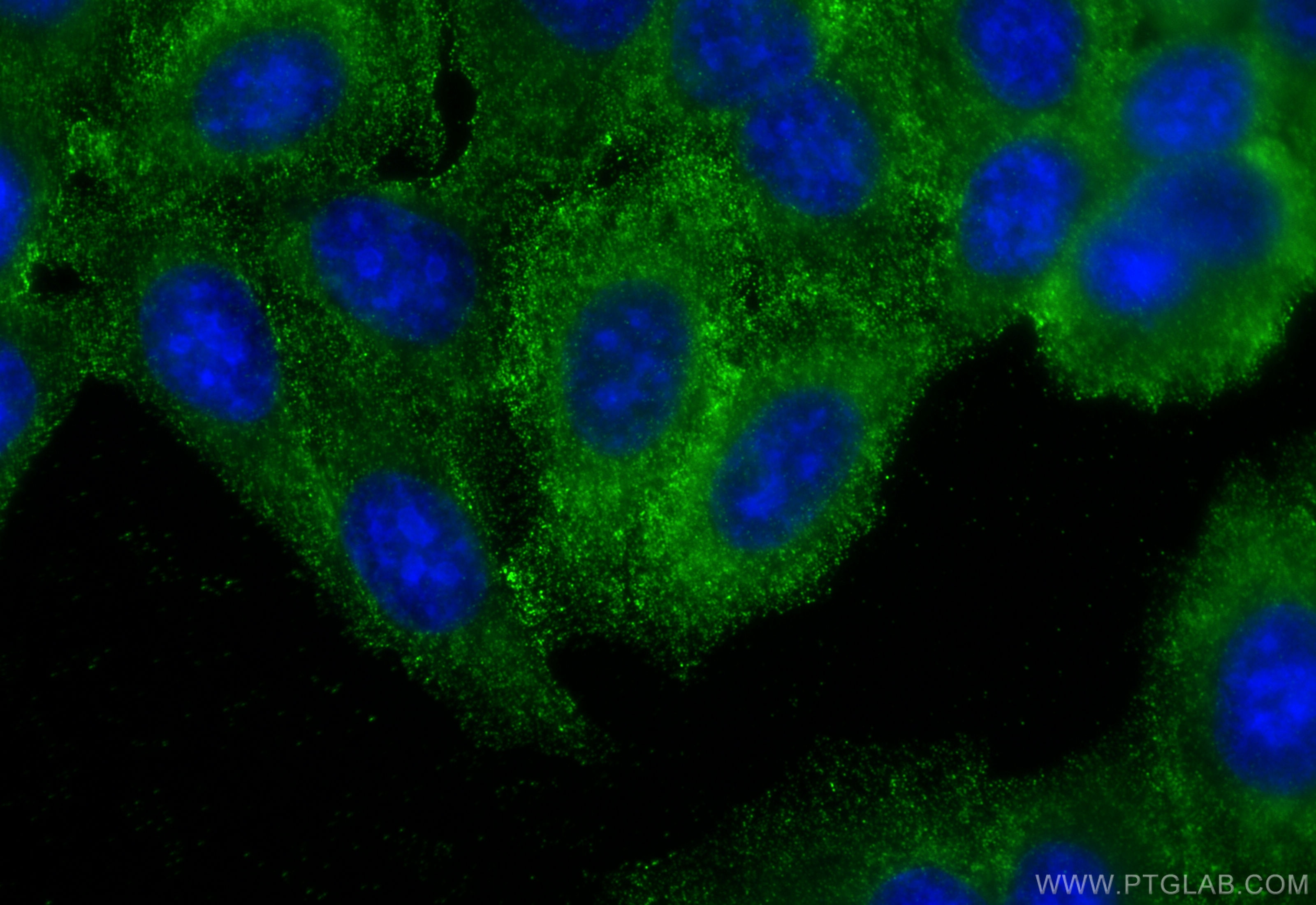Tested Applications
| Positive WB detected in | LNCaP cells, A549 cells, HepG2 cells, HeLa cells, HEK-293 cells, Jurkat cells, K-562 cells |
| Positive IHC detected in | human kidney tissue Note: suggested antigen retrieval with TE buffer pH 9.0; (*) Alternatively, antigen retrieval may be performed with citrate buffer pH 6.0 |
| Positive IF/ICC detected in | HepG2 cells |
Recommended dilution
| Application | Dilution |
|---|---|
| Western Blot (WB) | WB : 1:5000-1:50000 |
| Immunohistochemistry (IHC) | IHC : 1:250-1:1000 |
| Immunofluorescence (IF)/ICC | IF/ICC : 1:200-1:800 |
| It is recommended that this reagent should be titrated in each testing system to obtain optimal results. | |
| Sample-dependent, Check data in validation data gallery. | |
Published Applications
| WB | See 6 publications below |
| IHC | See 2 publications below |
| IF | See 4 publications below |
Product Information
66586-1-Ig targets Beta Galactosidase in WB, IHC, IF/ICC, ELISA applications and shows reactivity with human, mouse, rat samples.
| Tested Reactivity | human, mouse, rat |
| Cited Reactivity | human, mouse, rat, rabbit, sheep |
| Host / Isotype | Mouse / IgG1 |
| Class | Monoclonal |
| Type | Antibody |
| Immunogen |
CatNo: Ag8069 Product name: Recombinant human Beta galactosidase protein Source: e coli.-derived, PET28a Tag: 6*His Domain: 329-677 aa of BC007493 Sequence: TSYDYDAPLSEAGDLTEKYFALRNIIQKFEKVPEGPIPPSTPKFAYGKVTLEKLKTVGAALDILCPSGPIKSLYPLTFIQVKQHYGFVLYRTTLPQDCSNPAPLSSPLNGVHDRAYVAVDGIPQGVLERNNVITLNITGKAGATLDLLVENMGRVNYGAYINDFKGLVSNLTLSSNILTDWTIFPLDTEDAVRSHLGGWGHRDSGHHDEAWAHNSSNYTLPAFYMGNFSIPSGIPDLPQDTFIQFPGWTKGQVWINGFNLGRYWPARGPQLTLFVPQHILMTSAPNTITVLELEWAPCSSDDPELCAVTFVDRPVIGSSVTYDHPSKPVEKRLMPPPPQKNKDSWLDHV Predict reactive species |
| Full Name | galactosidase, beta 1 |
| Calculated Molecular Weight | 76 kDa |
| Observed Molecular Weight | 64-66 kDa, 76-85 kDa |
| GenBank Accession Number | BC007493 |
| Gene Symbol | GLB1/Beta-galactosidase |
| Gene ID (NCBI) | 2720 |
| RRID | AB_2881946 |
| Conjugate | Unconjugated |
| Form | Liquid |
| Purification Method | Protein G purification |
| UNIPROT ID | P16278 |
| Storage Buffer | PBS with 0.02% sodium azide and 50% glycerol, pH 7.3. |
| Storage Conditions | Store at -20°C. Stable for one year after shipment. Aliquoting is unnecessary for -20oC storage. 20ul sizes contain 0.1% BSA. |
Background Information
GLB1(Beta-galactosidase) is also named as ELNR1 or Lactase. It cleaves beta-linked terminal galactosyl residues from gangliosides, glycoproteins, and glycosaminoglycans. This protein is identical to the elastin-binding protein (EBP), a major component of the nonintegrin cell surface receptor complex expressed in fibroblasts, smooth muscle cells, chondroblasts, leukocytes, and certain cancer cell types. Defects in GLB1 are the cause of GM1-gangliosidosis type 1 (GM1G1), GM1-gangliosidosis type 2 (GM1G2), GM1-gangliosidosis type 3 (GM1G3) and mucopolysaccharidosis type 4B (MPS4B). GBL1 is synthesized as an 85-kDa precursor that is C-terminally processed into a 64-66 kDa mature form and the released ~20-kDa proteolytic fragment was thought to be degraded (PMID: 10744681). GLB1 has 3 isoforms with MW of 76 kDa, 73 kda and 61 kDa.
Protocols
| Product Specific Protocols | |
|---|---|
| IF protocol for Beta Galactosidase antibody 66586-1-Ig | Download protocol |
| IHC protocol for Beta Galactosidase antibody 66586-1-Ig | Download protocol |
| WB protocol for Beta Galactosidase antibody 66586-1-Ig | Download protocol |
| Standard Protocols | |
|---|---|
| Click here to view our Standard Protocols |
Publications
| Species | Application | Title |
|---|---|---|
Antioxidants (Basel) Effects of Fisetin Treatment on Cellular Senescence of Various Tissues and Organs of Old Sheep | ||
Life Sci Gut microbiota-derived butyrate alleviates the impairment of mice intestinal integrity caused by toxoplasma gondii infection | ||
Biochem Pharmacol Vascular cellular senescence in human atherosclerosis: The critical modulating roles of CDKN2A and CDK4/6 signaling pathways | ||
Life Sci Alda-1 mediates cell senescence and counteracts bone loss in weightlessness through regulating mitophagy | ||
Free Radic Biol Med MnSOD non-acetylation mimic knock-in mice exhibit dilated cardiomyopathy | ||
Am J Sports Med Effects of Losartan and Fisetin on Microfracture-Mediated Cartilage Repair of Ankle Cartilage in a Rabbit Model |












